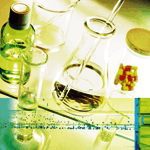
In the News
Managing IP in Health and Agricultural Innovation
Intellectual Property Management in Health and Agricultural Innovation: A Handbook of Best Practices, released in May, is a joint publication of the U.K.’s Centre for the Management of Intellectual Property in Health Research and Development (MIHR) and Public Intellectual Property Resource in Agriculture (PIPRA). Written by practitioners in the field, its 153 chapters aim to provide a comprehensive resource on current IP management issues and approaches, with strategies for utilizing the power of both IP and the public domain. The book illustrates how IP can be leveraged judiciously to forge stronger partnerships and usher in a new age of collaboration and sharing.
Lita Nelsen, head of technology transfer for MIT and one of the editors of the two volume work, describes it as "the how-to manual for using the tool of IP," geared toward two distinct audiences: research institutions and technology transfer operations in developing countries; and first world institutions, “to make sure that they consider the needs of developing countries when they license important IP in medicines, vaccines, and foods, and do it right.”
The MIHR, a not-for-profit organization, seeks to foster innovative practices in the ethical stewardship of IP for the social and economic benefit of developing countries. It has created regional networks of professionals engaged in technology transfer, and has been involved in developing technology transfer management skills in more than 200 institutions in Sub-Saharan Africa, India and Southeast Asia. In industrialized countries, MIHR promotes the use of IP tools for “humanitarian licensing” to help technologies reach impoverished populations.

Kenya signs Biodiversity Deal with Novozymes
Novozymes and KWS will embark on a collaborative project to characterize Kenyan microbial diversity from specific biological niches. As part of the project Novozymes will train Kenyan students in taxonomy, isolation and identification of micro-organisms. Novozymes will also transfer advanced technology to Kenya, including knowledge of how to collect and isolate micro-organisms and how to characterize microbial diversity.
The agreement gives Novozymes the right to make commercial use of Kenya’s microbial diversity in return for financial compensation, and for local capacity-building – in the shape of a Kenyan laboratory facility with the necessary materials for implementing enzyme screening in Kenya. If Novozymes commercializes products developed on the basis of microbial strains isolated as part of the project, KWS will receive a milestone payment and a running royalty from sales.

Investment in Domain Name Pays Off
The user-friendly business.com site describes itself as the leading business-to-business (B2B) search engine and pay-per-click advertising network, visited each month by some 6 million business users looking for products and services on the Internet. It was ranked by Inc. Magazine last year as the fifth fastest growing private media company in the U.S., now earning US$15 million a year.
Crédit Suisse will run the auction which is expected to attract major big media players like the New York Times, Dow Jones & Co., Thomson and Bloomberg.
Workshop -Copyright and Related Rights in the Audiovisual Sector
A WIPO national workshop on Copyright and Related Rights in the Film and Audiovisual Sector was held in Beijing, China, on May 24 and 25, in cooperation with the China’s State Administration for Radio, Film and Television (SARFT) and Film Copyright Protection Association. Senior government officials, producers, and film industry legal advisers from across China joined speakers from the International Federation of Actors, the Motion Picture Association, and the Audiovisual Producers’ Rights Management Association (EGEDA), a network of Latin American and Spanish audiovisual producers. Opening the workshop, Mr. Tong Gang, Director General of the SARFT Film Bureau, and WIPO Assistant Director General Ms. Wang Binying underlined the importance of cooperation between SARFT and WIPO at a time of great change for copyright legislation and collective management in China and the wider world.
The workshop compared how copyright law, collective management and licensing are applied to audiovisual works and performances in China, the U.S., Europe and Latin America. In China, the speakers explained, the producer is considered as the maker and original copyright owner of the film. Similarly in the U.S., albeit via the different route of “work for hire,” the producer is considered as the initial owner of all the intellectual contributions to the film production made by directors, performers, etc. Collective bargaining agreements then determine the remuneration of the performers in proportion to the result of the exploitation of film.
Those present agreed that it was important, under all these systems, to compensate performers in a fair an adequate manner, while respecting the producer’s economic ability to exploit the film. An interesting debate ensued on the advantages and disadvantages of a system based on collective bargaining, or on statutory and neighboring rights combined with collective management. There was also general agreement as to the need to promote legitimate use of audiovisual content and fight against piracy
The WIPO Magazine is intended to help broaden public understanding of intellectual property and of WIPO’s work, and is not an official document of WIPO. The designations employed and the presentation of material throughout this publication do not imply the expression of any opinion whatsoever on the part of WIPO concerning the legal status of any country, territory or area or of its authorities, or concerning the delimitation of its frontiers or boundaries. This publication is not intended to reflect the views of the Member States or the WIPO Secretariat. The mention of specific companies or products of manufacturers does not imply that they are endorsed or recommended by WIPO in preference to others of a similar nature that are not mentioned.